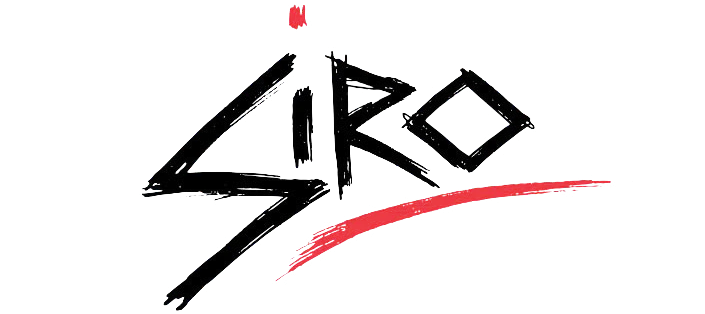Critiques and Commendations
'Entropy for beginners' on Spotify
Art Cover by Siro Carraro - 2024

'Hear me calling' on Spotify
Art Cover by Siro Carraro - 2024

'Entropy for beginners' LP Album Cover by Siro Carraro - 2024


'Art Below' - 2022


Boundary Gallery Prize for Figurative Art - 2007


A constant search: the art of Siro Carraro
An open box. A disclosed entity made out of words and images. Siro Carraro’s work is an evident invitation. The artist gives me the opportunity to read his precious words, both on neatly organised notebooks and on roughly scattered paper. He calls himself the “director of his characters”. When Siro turned to painting after being an actor for several years in 2002, he could not avoid but take theatre with himself throughout his artistic path. The artist mainly works with painting, and for him “paintings are like stages”. Siro’s stages are recognisable because of the contrasting, strong colours he juxtaposes, alternating characters described with full brushstrokes to evanescent atmospheres in the backgrounds. Thick paint becomes almost tridimensional on his canvasses, and the process to get to that outcome coincides with what he defines “the task of the artist”: continuously questioning himself.
Siro has been described as “childish but not a child”. Beyond that, what shall be considered youthful about Siro is his energetic attitude towards painting. Precisely, Siro’s artistic energy can be compared to the Nietzschean meaning of child. In Thus Spoke Zarathustra Friedrich Nietzsche describes three phasis of a metamorphosis. The camel carries the weight of the moral structures in society, but it is soon overwhelmed by them. Then, the lion, is the animal which overcomes the impositions of religion but is unable to create new meanings. That is why a final transformation is necessary: the child, who is seen as a renewed energy, as birth, purity and lack of preconceptions. The child is continuously moving, and he would find solutions to problems through repetition, by making sure the wheel spins after his stimulating push. Therefore, creation would be possible because of him. This philosophical image can be related to Siro’s work both as it reflects the act of creating itsef and because Siro’s characters reveal his youthful, energetic persona.
Taking into consideration Siro’s work, the psychological complexity of the characters is strengthen by the contexts surrounding them. The background of his compositions presents several significant details.

Natural landscapes tower on stylised subjects arising a sense of loss (fig.1) or become a whole with the characters (fig.2),

while floating masks are plunged into dark backgrounds and address the idea of the “mask” in the theatre of Luigi Pirandello (fig.3).

In One, No One and One Hundred Pirandello examines the crisis of identity in a human being who believes to be one person, but in fact interacts with and is judged by one hundred, to finally become no one. Pirandello points out that the mask worn by characters are also on human being’s “faces”, or we shall say “selves”, therefore life itself can be seen as a play.
The subject of the mask is an expedient for artists to describe the moment of struggle when the human being realises that s\he has a precise role in society and that s\he has to fulfill the expectations involved in that role. The complex psychological implications which trigger in this circumstance are examined by several of Siro’s artworks. In Diamante, a suspended triple-faced mask presents a different identity in each section (fig.4).

The red and white grid on the floor suggests an ongoing imperfection in something that should by definition be perfect: geometry.
In other paintings, characters are described in a central position, with eyes expressing their intense emotions. Ghosts of the past and unconscious images coming to surface are represented in the background or at the sides of the figures (fig.5, fig.7).



The geometric structures at the back of the subjects function in two different ways: on one side, they symbolise the rationality opposed to the chaotic thoughts, to the articulate psychology of the human mind. On the other hand, they function as sort of cages for these subjects who appear trapped in their uncanny feelings (fig.6, fig.8).

The questionable expectations of society and the consequent sense of inadequacy of some individuals is critically explored in some of Siro’s paintings. Marginalisation is one of the subjects the artist is very keen on exploring.

In Melancholic Jazz (fig.9) the artist describes the struggle of a physically impair person to affirm himself in contemporary society, where the appearance of the body tends to overcome the being of a person. The repetition of geometric volumes in the composition increases the sense of trap of the body.

In La poesia di Lavinia (fig.10) the artist explores a similar theme, as the central figure is a man longing to be a woman. Many others of Siro’s characters do not reveal their gender, and this is certainly another pivotal theme in the work of the artist.
The story-telling in Siro Carraro’s work is multi-faceted and theatrical. As the artist himself says:
A constant search, where colours become the tool to tell a story.



